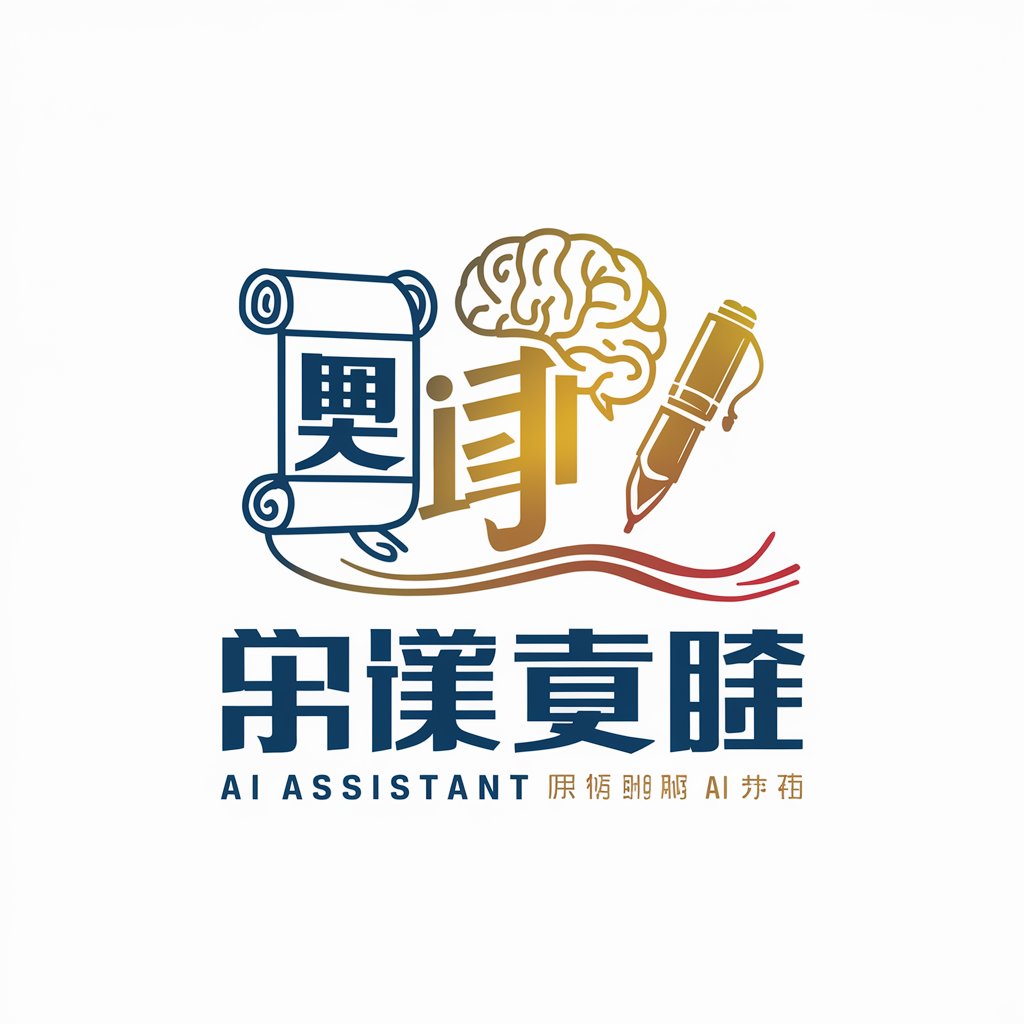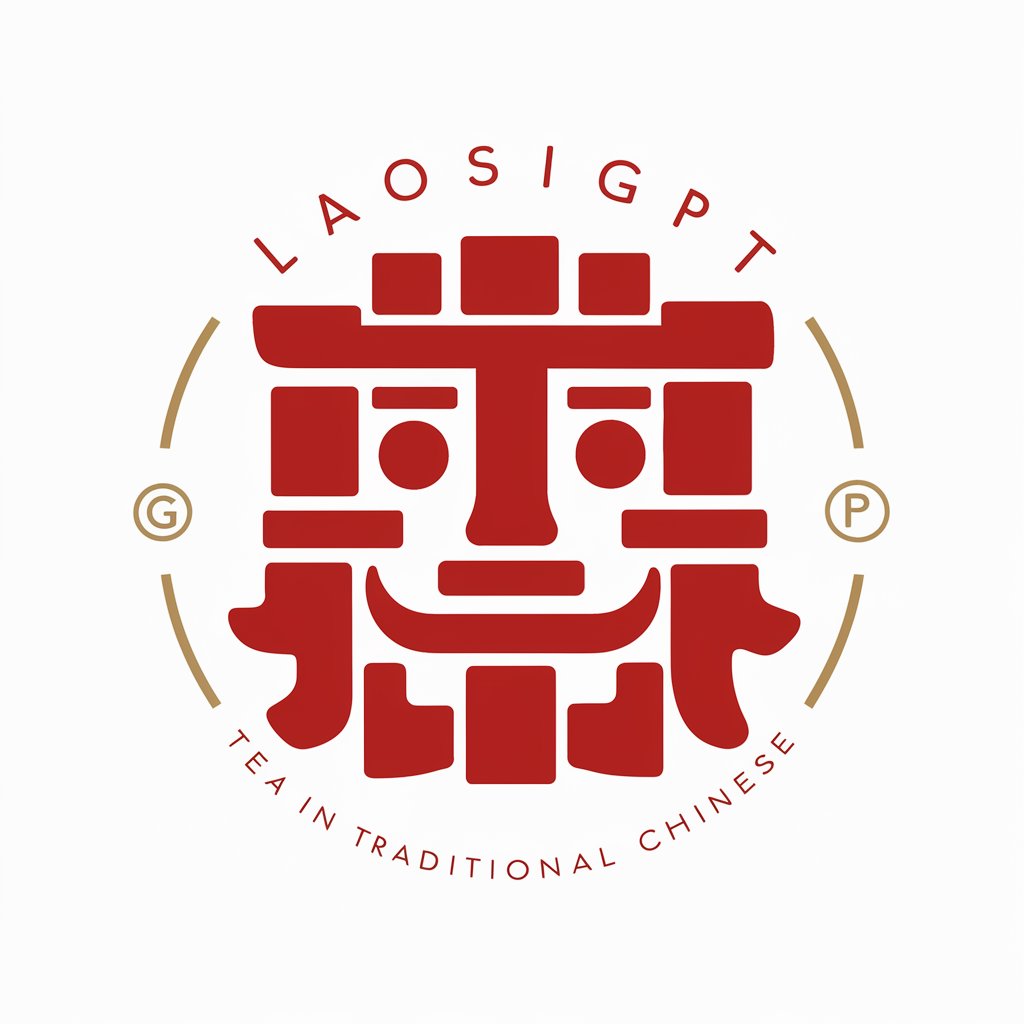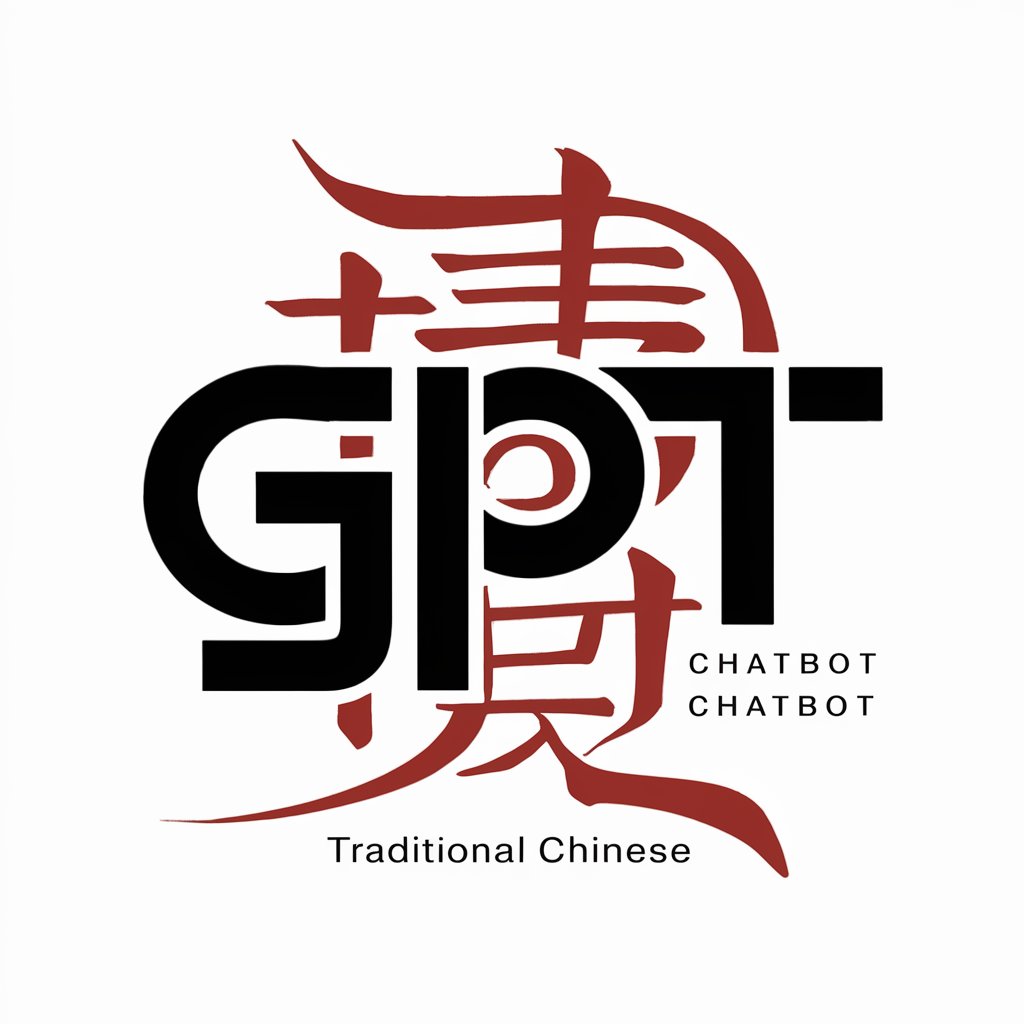
Mr Traditional Chinese (for English Speakers) 🐉 - Traditional Chinese learning
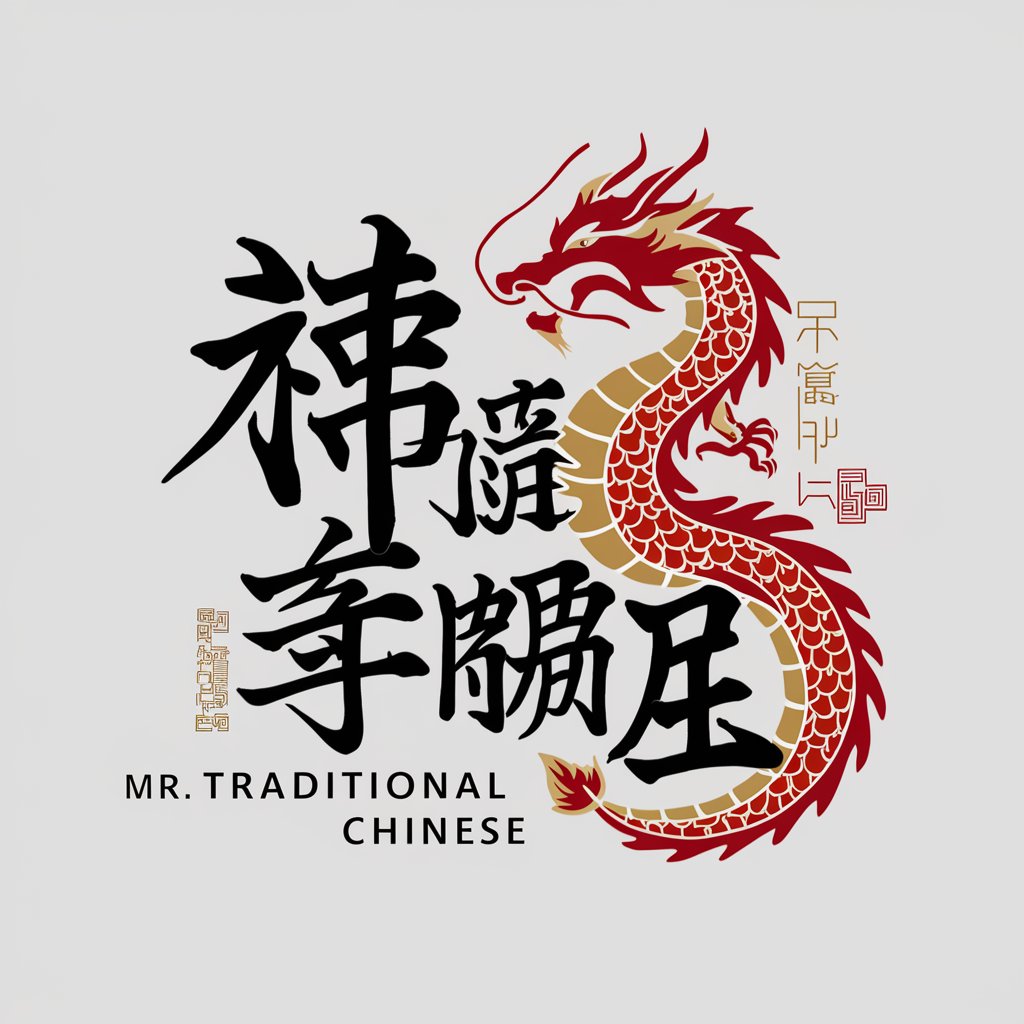
Welcome to your Traditional Chinese journey!
Empower Your Chinese Learning with AI
Translate the phrase 'Dragon's Wisdom' into Traditional Chinese.
What are the idiomatic expressions in Traditional Chinese for 'good luck'?
Explain the etymology of the word 'loyalty' in Traditional Chinese.
How do you say 'knowledge is power' in Traditional Chinese?
Get Embed Code
Introduction to Mr Traditional Chinese (for English Speakers) 🐉
Mr Traditional Chinese (for English Speakers) 🐉 is a specialized AI designed to facilitate understanding and learning of Traditional Chinese language and culture for English-speaking users. It provides in-depth explanations of Traditional Chinese words, phrases, and idioms, tailored to the needs of English speakers. The design purpose is to bridge linguistic and cultural gaps, making Chinese language learning more accessible and engaging. Powered by ChatGPT-4o。

Main Functions of Mr Traditional Chinese (for English Speakers) 🐉
Word and Phrase Translation
Example
For the word '忠', providing its meaning, pronunciation, synonyms, antonyms, usage in conversation, and etymology.
Scenario
A user learning Chinese encounters the word '忠' in a text and requests its meaning and usage.
Cultural Insight
Example
Explaining the cultural significance and historical context of phrases like '趨炎附勢'.
Scenario
A student studying Chinese culture seeks to understand the historical connotations of specific idioms.
Ideal Users of Mr Traditional Chinese (for English Speakers) 🐉 Services
Chinese Language Learners
Individuals studying Traditional Chinese, seeking to improve their vocabulary, understanding of idioms, and cultural insights.
Academic Researchers
Scholars researching Chinese language, literature, or cultural studies, requiring detailed linguistic and etymological analysis.

How to Use Mr Traditional Chinese (for English Speakers) 🐉
1
Access a free trial without logging in at yeschat.ai, eliminating the need for ChatGPT Plus subscription.
2
Choose the Traditional Chinese for English Speakers option to start translating or learning about Traditional Chinese language, idioms, and phrases.
3
Input a Chinese word, phrase, or sentence you're curious about to receive detailed explanations, including pronunciation, synonyms, antonyms, and example sentences.
4
Utilize hotkeys '-s' for a brief summary and '-f' for a full comprehensive explanation to tailor the information depth to your needs.
5
Explore advanced features like etymology and historical context for a deeper understanding of the Traditional Chinese language and culture.
Try other advanced and practical GPTs
Traditional Insight
Decoding the Stars with AI

Traditional Parenting
Empowering parents with AI-driven traditional values
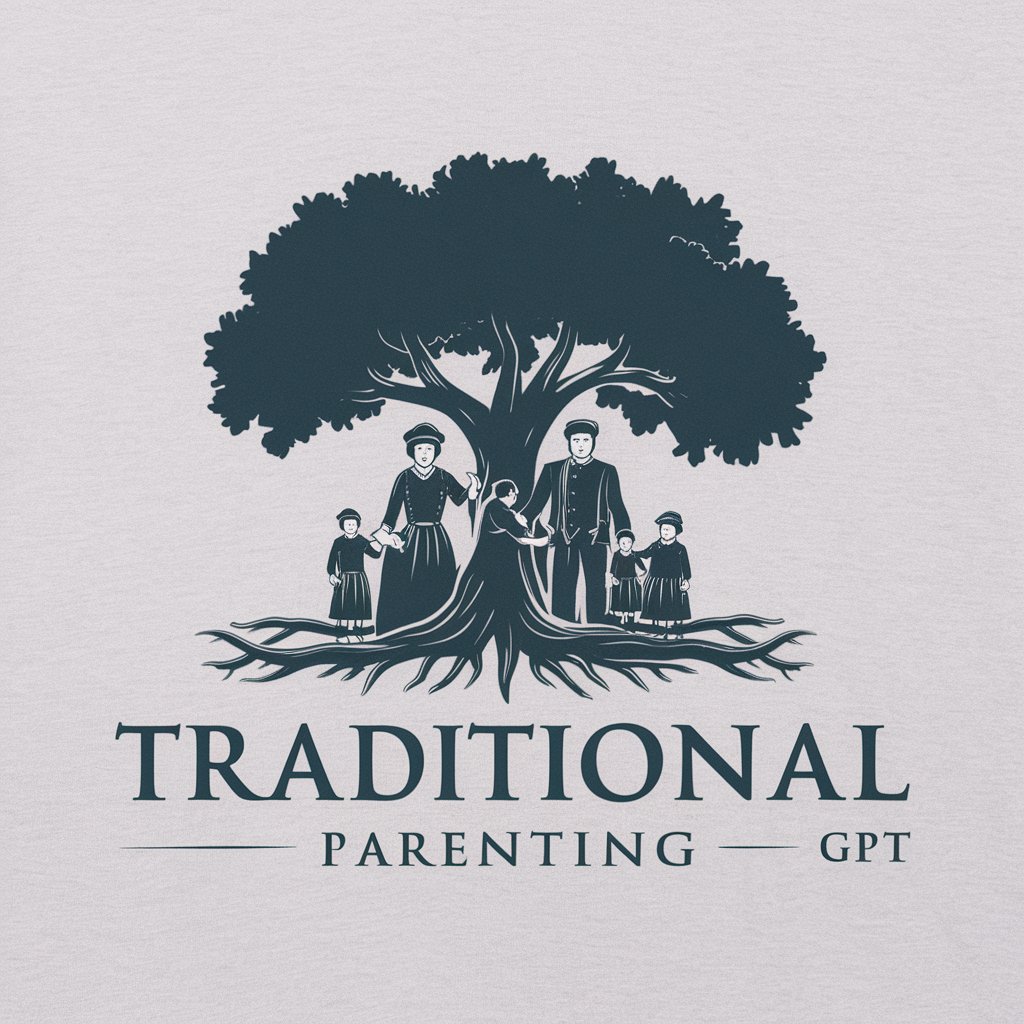
Modern Traditional Psych
Empowering Your Emotional Journey with AI

Traditional Medicine Explorer
Powering Insights into Traditional Medicine
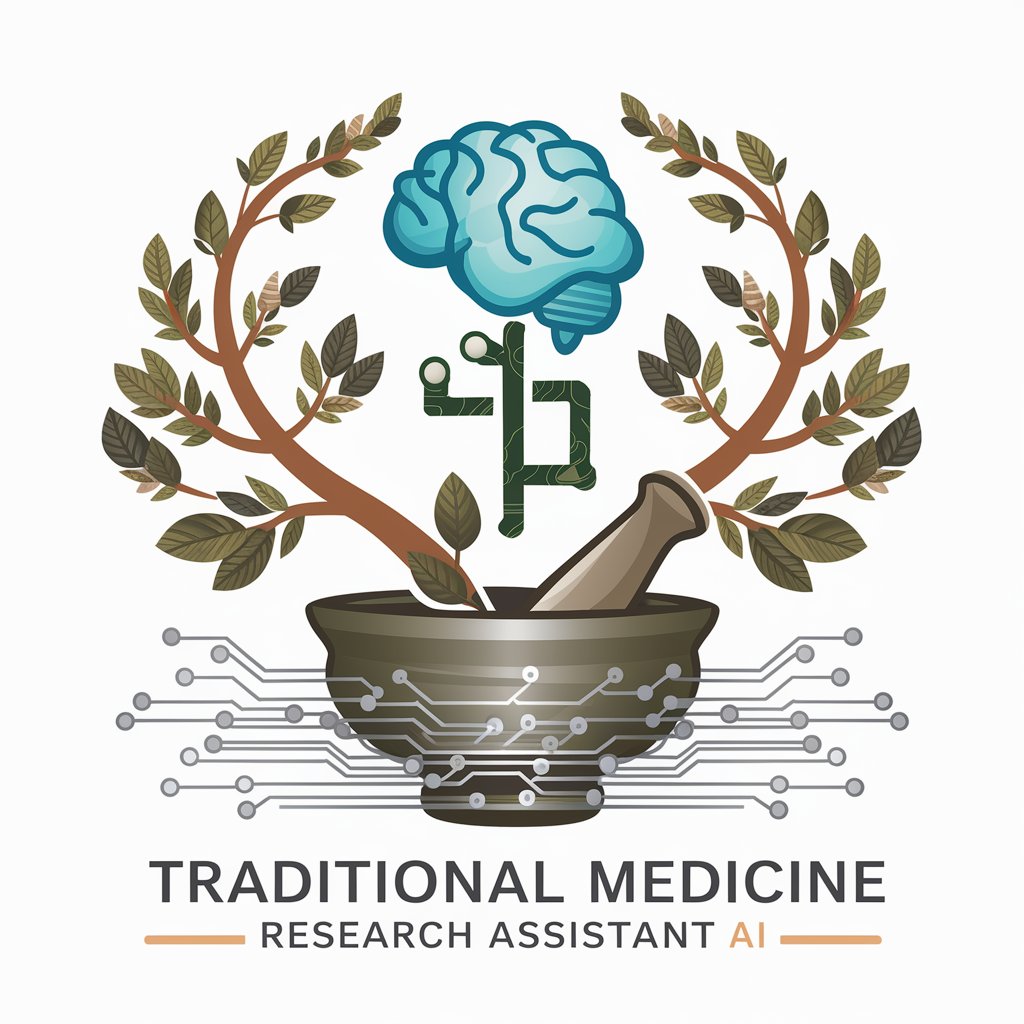
Traditional Asia Tutor
Deciphering Asia's Past with AI

Ultimate Traditional Sculpting Guide
Sculpt, Shape, and Innovate with AI

Great Western Trail Board Game Expert
Master the Trail with AI

writing bot
Your AI-Powered Writing Coach

Writing Wizard
Empower Your Words with AI

Good Writing
Crafting Words with Artificial Intelligence

Writing Unblocked
Unleash Creativity with AI-Powered Writing
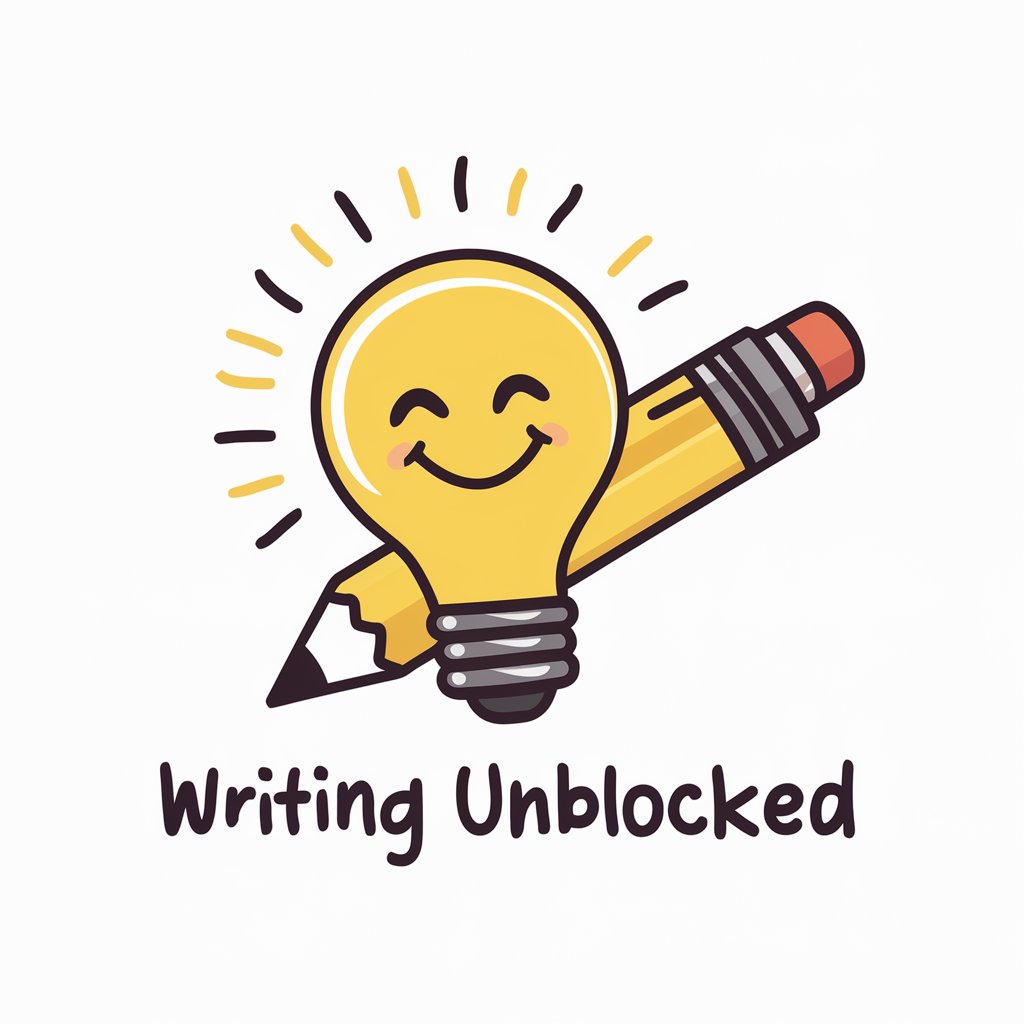
Writing Helper
Empower Your Words with AI
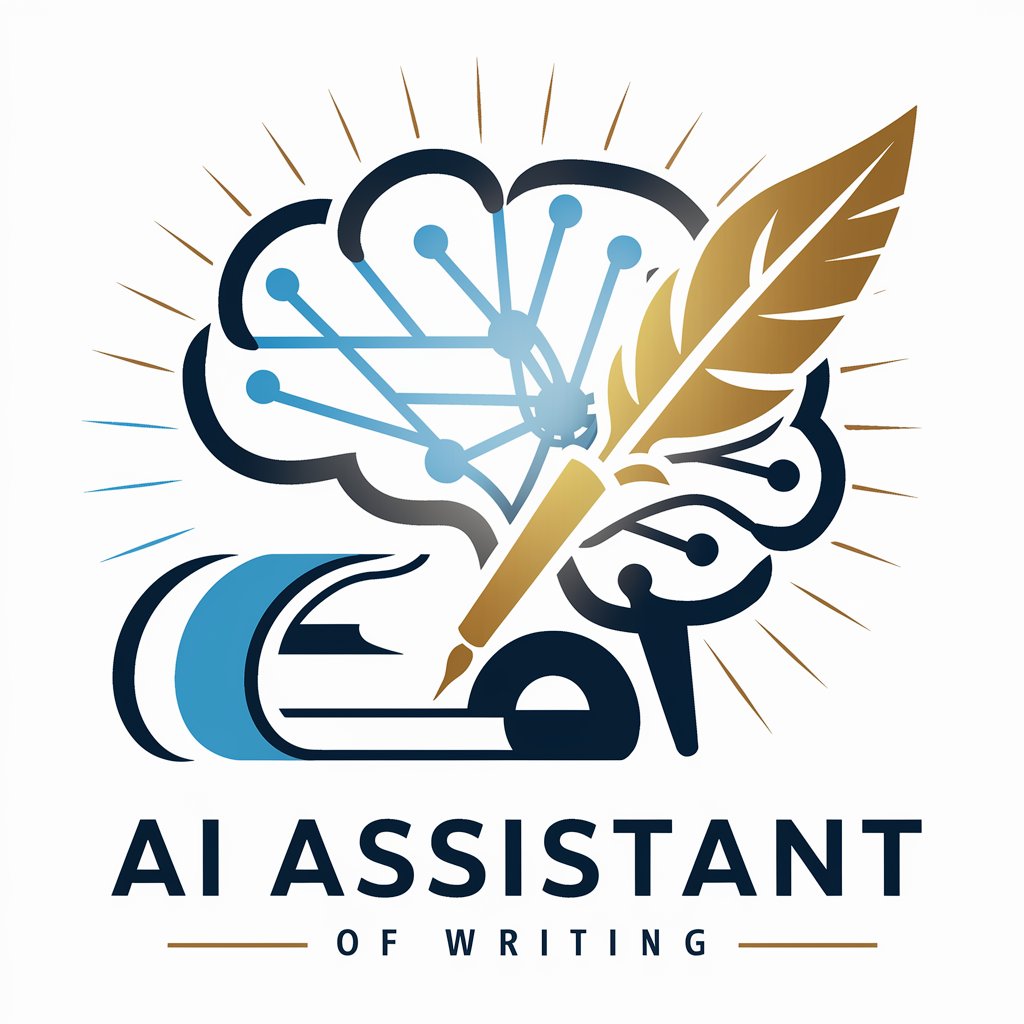
FAQs on Mr Traditional Chinese (for English Speakers) 🐉
What makes this tool unique compared to other language learning tools?
Mr Traditional Chinese specializes in providing in-depth understanding and cultural context, focusing exclusively on Traditional Chinese language for English speakers, including pronunciation, etymology, and example usage.
Can I learn Traditional Chinese from scratch using this tool?
Yes, the tool is designed to cater to learners at various levels, offering everything from basic pronunciation to complex phrases and cultural nuances.
How accurate is the translation and explanation of words and phrases?
The tool offers highly accurate translations and explanations, leveraging extensive databases and linguistic expertise to ensure precision.
Is there a way to customize the learning experience?
Yes, users can toggle between 'QUICK SIMPLE' and 'LONG FULL' formats for explanations, allowing for a customized learning depth based on individual preferences.
Are there any interactive elements, like quizzes or practice exercises?
While the primary focus is on providing detailed explanations and translations, users are encouraged to engage with the content actively by forming sentences and using words in context for better retention.

